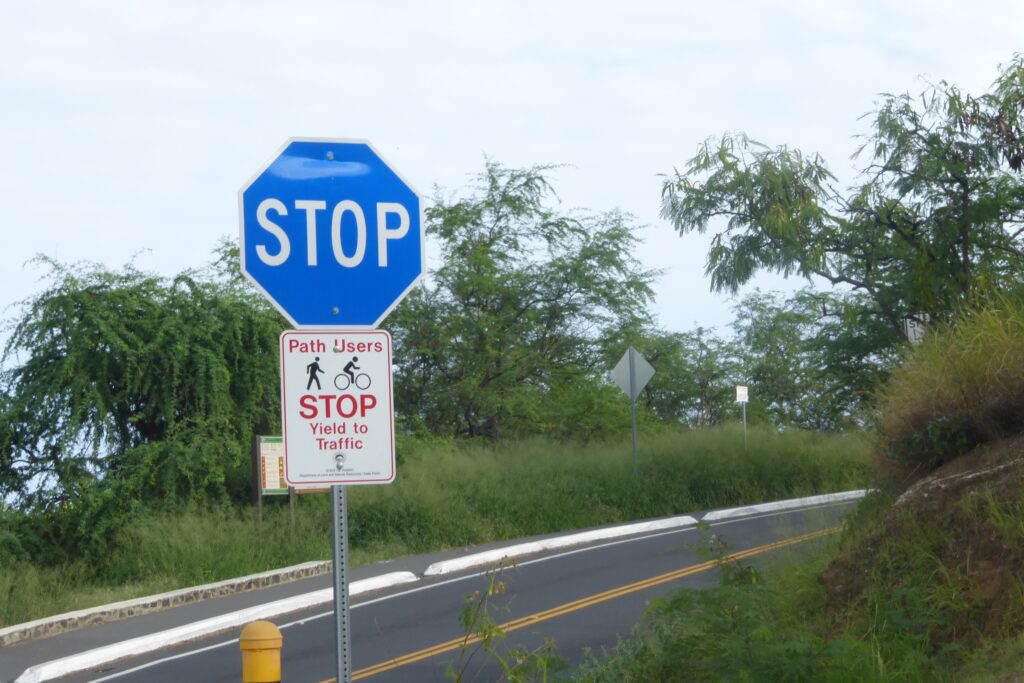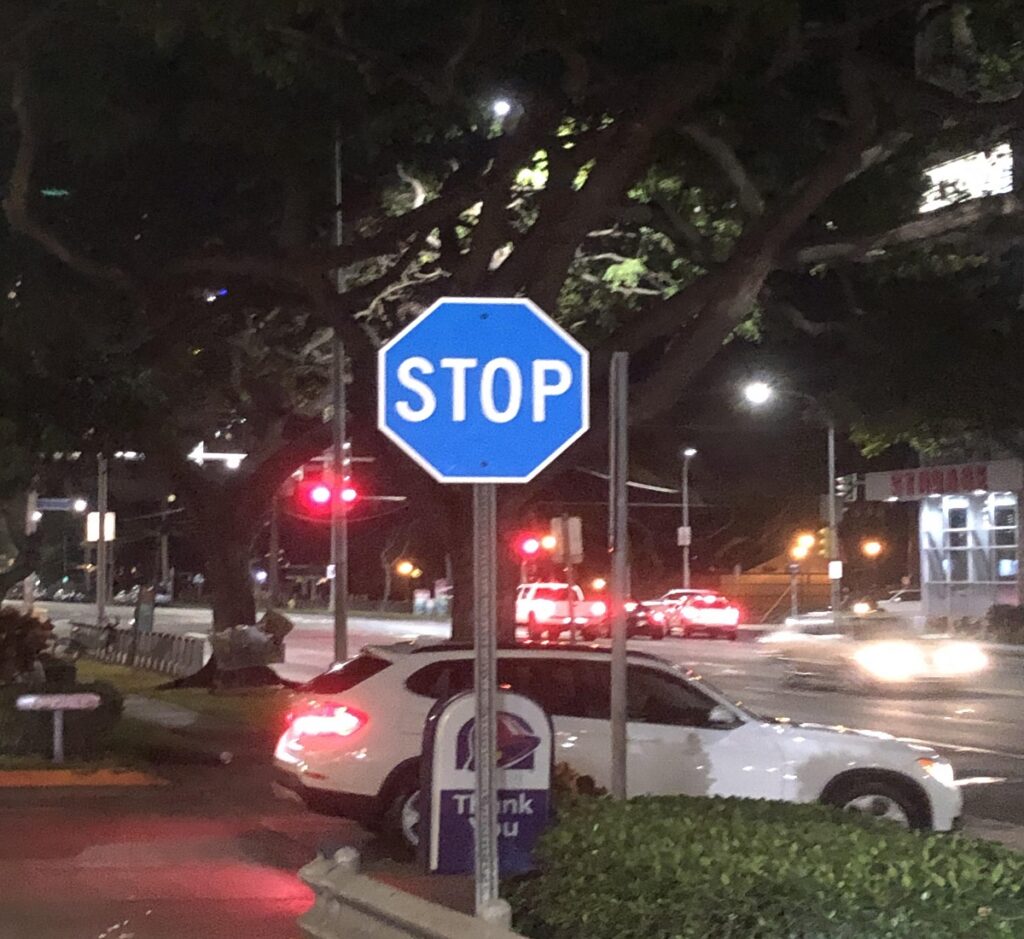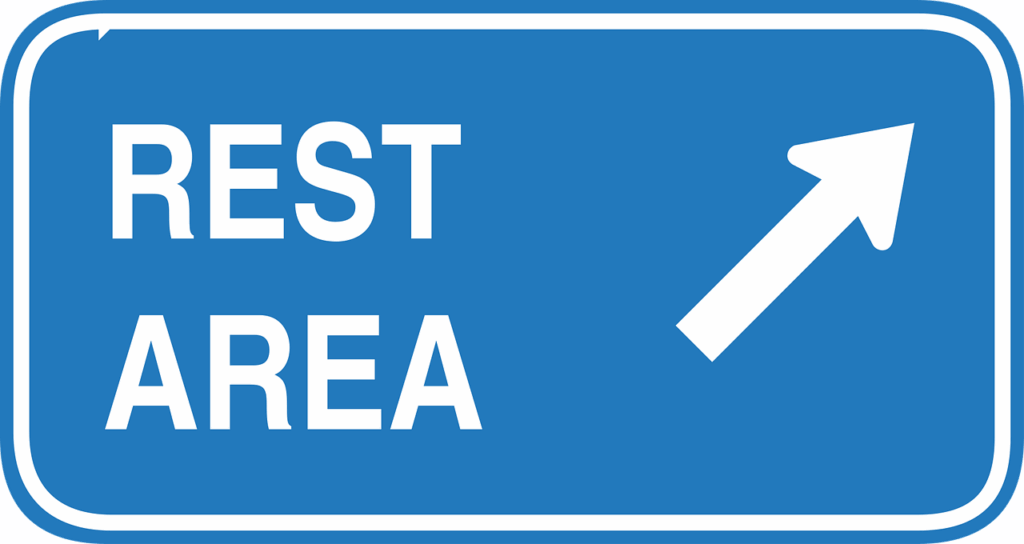Most of us have grown up recognizing the classic red octagonal stop sign as an unmistakable symbol of caution and order on the road. So, when a blue stop sign appears, it can be both puzzling and intriguing. These unusual signs stand out not only for their color but also for what they represent. Blue stop signs are rare, and their presence is often tied to specific contexts rather than standard public roads. To understand their meaning, it’s important to explore their history, the reasoning behind their design, and where they can typically be found.
The Origin of the Standard Red Stop Sign

The red stop sign as we know it today was standardized in 1954 in the United States after decades of experimentation with colors like yellow and white. The use of red was chosen because it universally signals alertness and caution, visible even in poor lighting. The octagonal shape was designed so drivers could recognize the sign’s meaning even if it was obscured by snow or dirt. Before this standardization, different states used varying colors, causing confusion. Thus, red became the globally recognized color for stop signs to ensure uniformity and instant recognition across borders.
Why Red Became the Universal Choice
Red’s association with danger and the need to stop stems from its visibility and psychological impact. Studies from the early 20th century showed that red light waves were among the most noticeable to the human eye, especially at dawn or dusk. This made red an ideal color for warning and prohibition signs. The U.S. Manual on Uniform Traffic Control Devices (MUTCD) established red for stop and yield signs by the mid-20th century. Over time, this color choice spread worldwide through international agreements like the Vienna Convention on Road Signs and Signals, cementing red’s dominance in traffic communication.
When Blue Stop Signs Started Appearing

Blue stop signs began appearing mainly in private areas, industrial zones, or non-public roads in the late 20th century. Unlike the standard red ones, blue stop signs are not regulated by national or international traffic laws. They are often used by private institutions, universities, or large corporations to control traffic flow within private property boundaries. In some regions, these signs were first seen around the 1980s as part of customized internal safety programs. Their distinct color indicates that the stop instruction is not legally enforceable under public road regulations but is meant for internal or informational purposes.
The Meaning Behind Blue Stop Signs
A blue stop sign does not carry the same legal authority as a red one. Instead, it functions as a private advisory or directive, often signaling that the area operates under different rules. The color blue is generally used for informational or service-related signs; it is thought of as a hospital or rest area indicator. In the context of a stop sign, blue typically implies a request for caution or cooperation rather than a mandatory legal stop. Drivers encountering blue stop signs are usually on private roads, parking lots, or maintenance areas where traditional enforcement by traffic authorities does not apply.
Where You’re Most Likely to See Them

You’ll typically find blue stop signs in areas like airports, gated communities, college campuses, or private industrial complexes. Some amusement parks or resorts also use them for aesthetic or branding reasons, blending safety cues with design consistency. For example, a corporate campus may adopt blue signs to align with its company colors while still directing internal traffic safely. Similarly, private security zones or military installations might use them to indicate internal checkpoints. While they mimic public traffic control devices, their presence often highlights the difference between public authority and private regulation.
International Variations and Exceptions
Outside the United States, the use of blue stop signs remains unusual but not entirely unheard of. In some parts of Japan, for instance, blue and white signage is used for different kinds of road instructions, though the official stop sign remains red. In rare cases, experimental signs have appeared in countries like Canada or the UK during safety trials to test driver reactions to color changes. However, none of these trials resulted in permanent adoption. Globally, the red stop sign continues to dominate, while blue variations remain symbolic of private control or experimental design efforts.
The Psychology of Blue in Road Design

Blue is a color psychologically associated with calmness, information, and direction rather than warning. This is why it’s widely used for guidance signs such as “Rest Area” or “Parking.” In traffic management, blue tones subconsciously signal comfort and assistance, contrasting with the urgency red creates. When used on a stop sign, this change in color alters driver perception, making it feel less authoritative but still worth noting. Designers who choose blue often aim for a less aggressive aesthetic, ideal for private environments where cooperation, not enforcement, defines road behavior.
Legal Implications of Blue Stop Signs
Legally, blue stop signs hold no official authority on public roads. They are not recognized under the MUTCD or international traffic law, meaning drivers are not required by law to obey them outside private property. However, within private boundaries like a corporate facility, ignoring them could breach internal safety rules. Some insurance or liability policies also note that disobeying posted internal signs, even unofficial ones, can lead to accountability in case of accidents. So, while blue stop signs are not “legal” in the traditional sense, they carry importance within the context they are placed in.
Common Misconceptions About Blue Stop Signs
Many drivers who come across a blue stop sign assume it’s either a prank or a design error, but that’s rarely the case. Blue stop signs are deliberate choices, meant for controlled environments with distinct regulations. Another misconception is that they indicate emergency or medical access, which is incorrect; those usually have blue directional signs, not stop signs. In some online myths, people have claimed blue stop signs are experimental government tests, but there’s no evidence supporting that. In reality, they are simply non-standard traffic markers designed for specific, localized use.
The Future of Blue Stop Signs
While blue stop signs are unlikely to replace the classic red ones, their presence is growing in niche settings. As private campuses, smart cities, and self-driving vehicle zones expand, custom signage may become more common. Designers may use color-coding to differentiate between human-driven and automated vehicle zones, where blue could indicate AI-managed traffic systems. Still, red will remain the global symbol for “stop” in public traffic for safety and consistency. Blue stop signs, meanwhile, serve as a fascinating reminder of how color and context shape the way we interpret road communication.
Comments